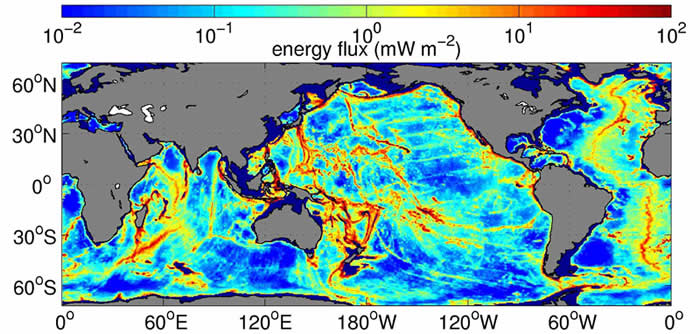Internal waves are an ubiquitous class of oceanic phenomena, where wave motion transfers energy and momentum in the deep interior of the sea. Internal tides are generated at regions where the barotropic tidal current encounters variations in bottom topography. The resulting waves arise at the dominant tidal bands. The principle lunar semidiurnal (M2) and the lunar-solar diurnal (K1) are generally the most significant constituents in many locations. Since the diurnal and Coriolis frequencies are equal at roughly 30°, freely radiating diurnal internal tides are possible only equatorward of this latitude. This accounts for roughly half the ocean area, and semidiurnal internal tides are freely radiating over nearly all of the oceans, to 75° latitude. The internal wave energy spectrum is generally “red,” with most energy tied to low baroclinic modes of the internal tide with horizontal wavelengths between 10 and 100 km. At these scales, waves are very stable. A considerable succession of physical processes must be implicated to cascade low-mode energy to the scales where instability can act to produce turbulence.
